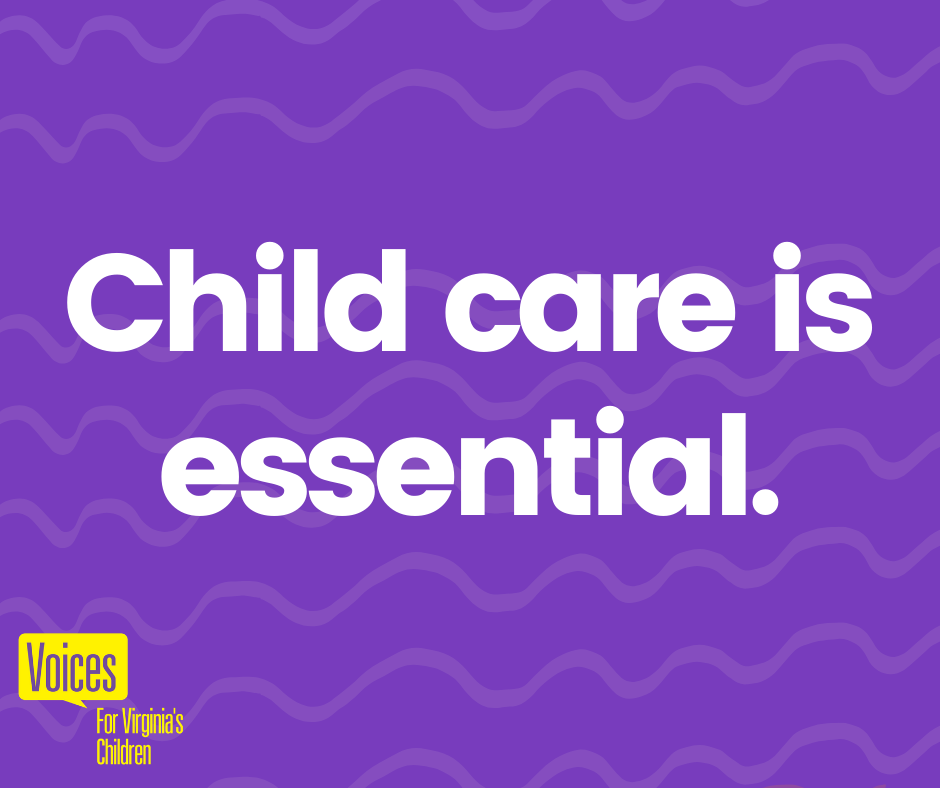

 There is an urgent need for child care to support working parents. Multiple factors are coinciding into a perfect storm. This storm is threatening both the child care industry and our workforce, impacting approximately 450,000 children in Virginia who need some kind of child care and might not be able to access it.
There is an urgent need for child care to support working parents. Multiple factors are coinciding into a perfect storm. This storm is threatening both the child care industry and our workforce, impacting approximately 450,000 children in Virginia who need some kind of child care and might not be able to access it.
Families are not able to access child care right now because:
We estimate the number of children who need assistance for child care right now due to school closures and family financial insecurity to be more than 450,000 children in in Virginia. However, this estimate could change as school divisions and families adjust their plans to participate in virtual learning.
Grants and contracts will be necessary to ensure that child care is available, well-staffed, and provide safe care. Initial grants to child care providers from Virginia’s CARES funding for child care afforded providers an average $11,000 grant for a three-month period. A second round of grants would make a similar amount of funding available to providers for July, August, and September. Nationally, only half of the child care providers who applied for Paycheck Protection Program (PPP) loans were awarded funds, representing one-quarter of the total child care industry.
Additional CARES Act funding awarded to Virginia can help support the supply of available child care to meet both the long-term needs of early childhood programs, educators, and short-term care responding to school closure. For the child care industry to come back, programs will need funding to make up for the loss of tuition, and to cover the cost of hiring and compensating additional staff.
Grants could be structured to meet the supply demands in the following ways:
With an investment of $80 million in CARES Act funding, Virginia could only provide:
None of these options are enough. Only the first two options invest in the longer-term stability of the child care industry and the early education workforce. The third is a band-aid to meet an immediate need. A pool of grant funding should be administered to promote additional child care access in communities with high percentages of low-income families and experiencing high rates of child care closures. Additional ground-level surveys and analysis being currently being conducted by SmartBeginnings communities can help identify needs. These networks or other local connectors like United Way can help local government and school division navigate what is needed to respond in their community.
The need is great. And the need is now. Use $80 million of Virginia’s unallocated $1.3 billion in CARES Act funding to provide child care stabilization grants to local community partnerships and providers. The Virginia Department of Education and Department of Social Services must develop grant criteria that local communities or regional collaboratives could apply for to meet any of the above needs for working parents and their children.
Read More Blog Posts